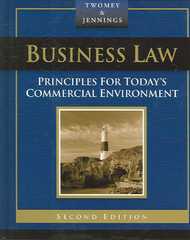Question
51. The successful efforts of Fed Chairman Paul Volcker in the 1980's and Alan Greenspan in the 1990's toreduce expected inflation had moved the U.S.
51. The successful efforts of Fed Chairman Paul Volcker in the 1980's and Alan Greenspan in the 1990's toreduce expected inflation had moved the U.S. short run Phillips curve:
a. to the right, and the unemployment inflation tradeoff was less favorable.
b. to the left, and the unemployment inflation tradeoff was more favorable.
c. to nowhere.Expected inflation remained very high.
d. none of the above.
52. The natural rate hypothesis argues that:
a. unemployment is always above the natural rate.
b. unemployment is always below the natural rate.
c. unemployment is always equal to the natural rate.
d. in the long run, unemployment rate returns to the natural rate, regardless of inflation.
53. If the sacrifice ratio is 5 and the U.S. GDP is $10 trillion, each 1% reduction in inflation would lead to:
a. an increase in GDP of $0.5 trillion.
b. an increase in GDP of $5.0 trillion.
c. a decrease in GDP of $0.5 trillion.
d. a decrease in GDP of $5.0 trillion.
54.Arguments against government using monetary and fiscal policies to stabilize the economy include:
a. Since monetary and fiscal policies affect the economy with long lags, such policies might by destabilizing.
b. Since economic data become available late, and economic forecasting is difficult, policymakers are often without reliable knowledge about the state of the economy or the potential impact of various policies.
c. The first rule of policymaking should be "do no harm."
d. All of the above.
e. None of the above
55.Proponents of zero inflation argue that reducing inflation has:
a. permanent costs and permanent benefits.
b. permanent costs and temporary benefits.
c. temporary costs and temporary benefits.
d. temporary costs and permanent benefits.
56. Government debt:
a. places the burden of current spending on future taxpayers.
b. reduces capital investment, future productivity and, therefore, future income.
c. reduces national savings.
d. all of the above
Step by Step Solution
There are 3 Steps involved in it
Step: 1

Get Instant Access to Expert-Tailored Solutions
See step-by-step solutions with expert insights and AI powered tools for academic success
Step: 2

Step: 3

Ace Your Homework with AI
Get the answers you need in no time with our AI-driven, step-by-step assistance
Get Started


